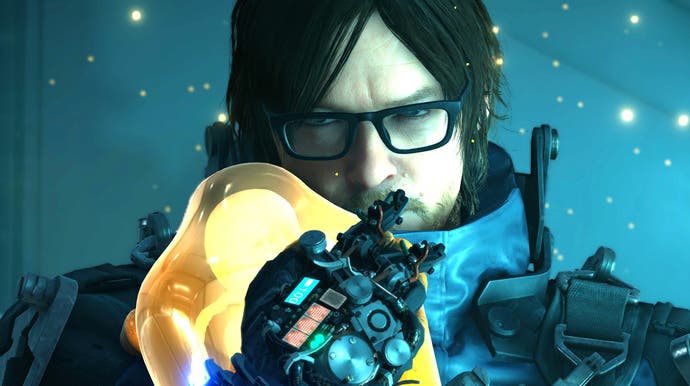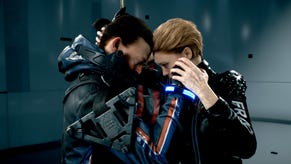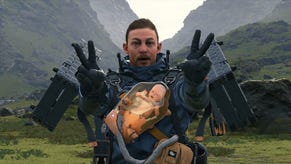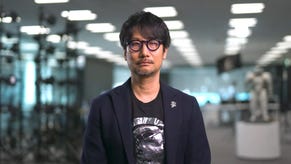How Death Stranding PC delivers on Kojima Productions' original vision
Initially designed to run at 60fps - and now capable of much more.
Previously a Sony PlayStation 4 exclusive, Kojima Productions' Death Stranding arrives tomorrow on PC - and it's a port that we can recommend without hesitation. While there's limited scalability beyond PS4 in terms of visual features, performance is exemplary - but what's really exciting is that this is a game that's quite unlike anything else on PC. Known for its state-of-the-art, industry-leading character rendering and beautiful environments and effects, Death Stranding is stunning on PC. As a first taste of what the Decima Engine can deliver outside the bounds set by the PlayStation 4 platform, it's astonishing. Not only that, but the PC edition also delivers the horsepower for Kojima Productions to deliver the game the way it was originally intended.
Asked what kind of scalability the PC port offers over the PS4 original, Kojima Productions technical director Akio Sakamoto is emphatic: "High frame-rate for sure! As we had originally designed the game in 60fps, this is a feature that I must say out loud! Of course, it is not locked to 60fps, and according to your hardware, it can go much higher." Based on our hands-on experience with the game, the studio more than delivers - and in ways that we didn't expect. Upon loading up the game, the first surprise is that we have a Sony-developed engine running on PC under a Microsoft graphics API: DirectX 12. Bearing in mind that older PC Decima engine revisions (for development purposes) ran under OpenGL, we fully expected Vulkan as the API of choice.
"Firstly, our goal from a developer standpoint was that we didn't want to do anything technically lower than what we accomplished on PS4. So, when we looked at the PS4-dedicated API and thought about how to bring it to PC, we realised that it would be very difficult to maintain the same quality if we worked with DirectX 11," says Sakamoto. "Because of this, the next step was to think about DirectX 12 or Vulkan. We started to discuss these technical issues with our partners Nvidia and AMD, while also looking into information from various other sources. We of course looked at the market at that time (how many people are using Windows 10 in the market, or information on DX12 etc) and also knew we needed to consider the timing of the PC version release. The result of all this discussion and debate was that we decided to go with DX12. I could also mention that not much information on Vulkan was available at the time either."
It seems that development of a PC rendition of Decima continues at Guerrilla for production purposes, as Sakamoto continues: "We already had the PC version of Decima as a development tool. But concerning the graphics side, to have the performance running as good as on the PS4, we needed to develop in a way that we could utilise the most out of DirectX 12. At that time, not much information was available for DirectX 12, so this was the most difficult part."
Beyond the choice of API, another key factor in the success of the Death Stranding port is how Kojima Productions have migrated the game to more modern CPU architectures. Based on our understanding of Decima based on visits to Guerrilla HQ, the engine is built around a 30 frames per second update, meaning that any spare CPU cycles within the 33ms per-frame render time are put to use predictively in streaming in world data. In our tests, Death Stranding could at over 120 frames per second using nothing more than a Core i5 8400. The exception is engine-driven cutscenes, which are unfortunately capped at 60fps.
"How can we optimise the CPU? How can we bring the performance up?" muses Akio Sakamoto. "To solve each of these tasks, we discussed and examined the best possible solutions. We spoke to Intel and AMD, trying to optimise as much as possible. As a result, even if you are using less core power than the PS4, we've altered the way threads are utilised to ensure the best performance possible."
The end result is that an engine optimised for an octo-core cluster of low power AMD Jaguar cores can now run on CPUs with lower core counts. Kojima Productions' minimum spec is a Core i5 3470 or a Ryzen 3 1200 - these are both quad-core chips. While they have much higher IPC than the Jaguars, possessing few physical cores has caused problems for other console ports including Red Dead Redemption 2 and Detroit Become Human. With more modern CPUs, achieving 60 frames per second shouldn't be too onerous. We had no problems at all with the Core i5 8400 and also tested on a Ryzen 9 3900X. This also ran fine overall, but exhibited regular frame-time spikes at very high frame-rates.
Relatively speaking, Death Stranding does have a much higher baseline graphics spec, with the RX 560 and GTX 1050 3GB suggested in the reviewer's guide for 720p (!) gaming at a minimum of 30fps. Interestingly, the RX 560 is effectively more powerful than the base PS4, which runs the game at native 1080p. In our tests, we found that the Radeon RX 580 proved effective at delivering 1080p at 60 frames per second, so I suspect that the minimum GPU specs are likely wider-ranging than the recommendations suggested. The AMD card delivers a 12 per cent advantage over GTX 1060, which mostly runs at 60fps or higher but can dip beneath.
One thing we should stress is that some older DX12 graphics cards will not the run game. We were keen on try the PC version of Death Stranding using a 4GB version of the R9 270X - the closest PC equivalent to the original PS4's GPU. However, the game demands a minimum of the DX12 12_0 feature set, and first-gen GCN cards top out at the 11_1 feature level. According to Kojima Productions, DX12's tiled resources feature is used in Death Stranding for improved GPU memory management.
Unfortunately, mods are not supported - and neither is only cross play with PlayStation 4 users, as entire different servers are used. However, there is no segregation with the online component between Steam and Epic Game Store users - both use the same servers.
We'll be presenting our deep dive analysis tomorrow (bizarrely, there is a different embargo for showing captured assets for the game) but suffice to say that out of the box, the game's 'default' options are the closest you'll get to the PlayStation 4 experience, the difference being that anisotropic filtering is forced to 16x at all times, while the consoles seem to deliver something closer to 4x. Beyond resolution and frame-rate, scalability is somewhat limited though: the model detail setting pushes LOD pop-in distance further out with a minimal performance hit, while shadow quality on high (and indeed medium - they look the same) is essentially on par with consoles, as is virtually every other settings. Really, beyond extended LODs, there's little you can push further from a visual perspective.
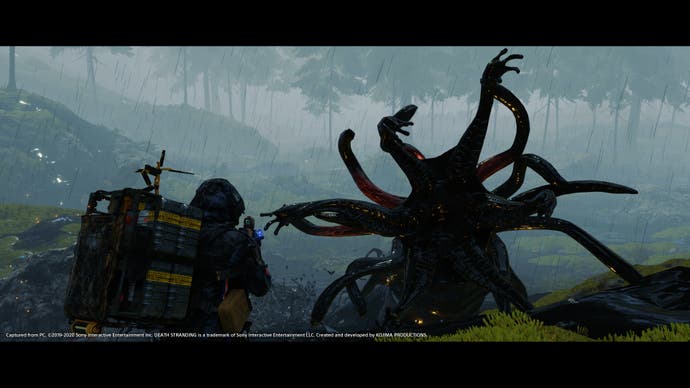
"I understood that for the PC version, having the ability to change configuration options would be very important," explains Akio Sakamoto. "But for the PS4 version, there weren't any hardware differences, so we only had to concentrate on bringing out the game's maximum performance on PS4. It is a completely different story, however, to adjusting to a variety of hardware that allows for option configuration. As we could start work on the PC version only after we finished the PS4 version, we were not able to implement all the option settings that we had hoped to. But we discussed at great length within the team so ensure that we had enough options to satisfy PC users!"
Resolution has by far the biggest impact on performance, and at least there are some innovative options here. AMD's contrast adaptive shading renders at 75 per cent of the native resolution in both vertical and horizontal axes, then sharpens the image based on contrast at minimal cost. The results are broadly OK, but are totally eclipsed by Nvidia DLSS 2.0 support. Performance and quality options are available, using AI upscaling from 50 per cent to 67 per cent respectively, again on both axes. This allows an overclocked RTX 2060 to hit 4K60 in performance mode (!) while the quality preset delivers better-than-native image quality. Nvidia's so impressed with the results, it's bundling Death Stranding with RTX GPUs.
"Death Stranding on PC supports DLSS, but unfortunately not ray tracing," says Akio Sakamoto. ".We are certainly interested in the technology and have looked into it and tested it, but as we wanted to bring the PC version to PC users as soon as possible, we decided against implementing that feature this time. But we would like to consider it for our next titles."
All of which brings us to the big question. With Death Stranding on PC, Kojima Productions has delivered a port of the game that comprehensively breaks free of the limitations of the current generation era of consoles, running beautifully on modern gaming PCs with far more power. In essence, from our perspective, the game's looking scalable enough to deliver a great PlayStation 5 experience.
"Right now, we are really focused on the PC version of Death Stranding, so we can't really say anything for the PS5," says Akio Sakamoto. "But once we take a little breath after launching the PC version, we would surely like to look into it deeper, and hope to let everyone know once we come to some decisions."
